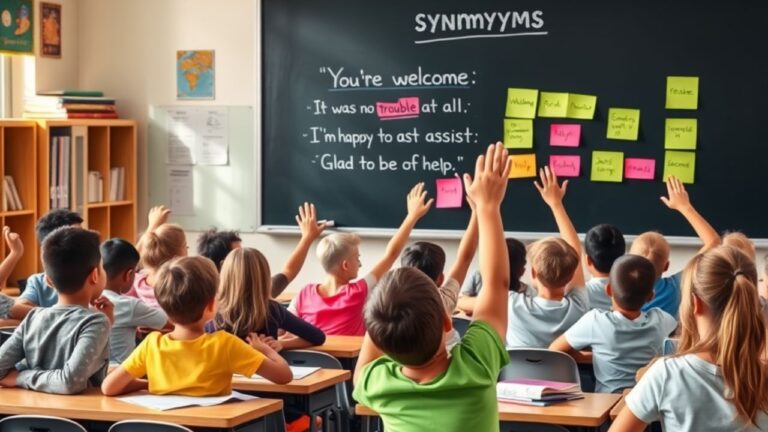Sometimes, saying “no worries” in a professional setting might not feel appropriate. Instead, you can use alternatives like “no problem,” “my pleasure,” or “happy to help.” If you want to sound more formal, try “you’re welcome,” “it’s no trouble at all,” or “glad to assist.”
In emails, phrases like “don’t mention it” or “always here to help” work well. Choosing the right words can help maintain a polite and professional tone while keeping conversations smooth.
What Did “No Worries” Mean ?
“No worries” is an informal phrase that means “it’s not a problem” or “there’s nothing to be concerned about.” It is often used to reassure someone that everything is fine or that they don’t need to apologize.
The phrase originated from Australian English and has become common in casual conversations worldwide. In professional settings, it’s best to use more formal alternatives like “no problem” or “happy to assist.”
Advantages and Disadvantages
Advantages of Saying “No Worries”
- Friendly and casual tone – Helps create a relaxed and approachable conversation.
- Quick reassurance – Easily puts others at ease, making them feel comfortable.
- Widely understood – Commonly used in many English-speaking countries.
- Positive and stress-free – Conveys a laid-back and easygoing attitude.
Disadvantages of Saying “No Worries”
- Too informal for professional settings – May not be suitable for business or formal communication.
- Can be misunderstood – Some may find it dismissive or unprofessional.
- Lacks seriousness – Might not be ideal in situations requiring empathy or concern.
- Cultural differences – Not everyone uses or understands it the same way.
Synonyms
Formal Alternatives:
- You’re welcome.
- My pleasure.
- It was no trouble at all.
- I’m happy to assist.
- Glad to be of help.
Polite and Professional Responses:
- No problem at all.
- Always happy to help.
- Don’t mention it.
- It’s nothing, really.
- I appreciate your gratitude.
Casual Yet Professional Alternatives:
- Anytime!
- Not a problem.
- It’s all good.
- Think nothing of it.
- That’s what I’m here for.
Reassuring Responses:
- No need to worry.
- Everything is taken care of.
- Consider it done.
Formal Alternatives
You’re welcome.
This phrase is a polite way to acknowledge someone’s thanks. It is widely used in professional settings to show appreciation. It reassures the person that their gratitude is accepted without any issue. It keeps communication warm and respectful.
Example:
Employee: “Thank you for your support!”
Manager: “You’re welcome. I’m always here to help!”
Short Letter:
Dear Mr. Smith,
Thank you for your kind words. You’re welcome! It was my pleasure assisting you with your request. Let me know if you need anything else.
Best regards,
John
My pleasure.
This phrase conveys genuine happiness in helping someone. It is often used in customer service and business emails. It makes the conversation sound polite and professional. It reassures the other person that you were happy to assist.
Example:
Client: “Thanks for resolving my issue so quickly!”
Support: “My pleasure! Let me know if you need further assistance.”
Short Letter:
Dear Ms. Lee,
It was my pleasure assisting you with your concerns. Please feel free to reach out if you need any further help. Looking forward to working with you again.
Best,
Sarah
It was no trouble at all.
This phrase reassures the other person that their request was not inconvenient. It keeps the conversation professional and friendly. It is useful in customer service and workplace interactions. It helps in building positive relationships.
Example:
Colleague: “I really appreciate your help on this project!”
You: “It was no trouble at all. I’m happy to contribute!”
Short Letter:
Dear Mr. Brown,
It was no trouble at all assisting you with your request. Let me know if there’s anything else I can do. I’m happy to help.
Best regards,
Emily
I’m happy to assist.
This phrase expresses a willingness to help. It is professional and polite, making it perfect for work emails and client interactions. It also reassures the person that you are open to further assistance. It promotes a positive work culture.
Example:
Customer: “Thanks for answering all my questions.”
Support Agent: “I’m happy to assist! Let me know if you need anything else.”
Short Letter:
Dear Mr. Taylor,
I’m happy to assist you with your concerns. Please feel free to reach out if you need any more help. Looking forward to our continued collaboration.
Best regards,
Sophia
Glad to be of help.
This phrase conveys appreciation and willingness to assist. It makes the person feel valued. It is perfect for both emails and face-to-face interactions. It reassures the recipient that their request was not a burden.
Example:
Manager: “Thanks for staying late to finish the report.”
You: “Glad to be of help! Let me know if you need anything else.”
Short Letter:
Dear Ms. White,
I’m glad to be of help with your recent request. Please don’t hesitate to ask if you need further assistance. Wishing you success!
Best,
Michael
Polite and Professional Responses
No problem at all.
This phrase reassures the other person that their request was easy to handle. It is professional yet friendly. It helps in maintaining positive communication. It is ideal for workplace and customer service interactions.
Example:
Colleague: “Thanks for covering my shift!”
You: “No problem at all! Glad to help.”
Short Letter:
Dear Mr. Harris,
No problem at all! I was happy to assist you. Let me know if you need anything else. Looking forward to working together.
Best,
David
Always happy to help.
This phrase expresses ongoing willingness to assist. It keeps conversations professional and friendly. It is great for emails and customer interactions. It ensures the recipient feels valued.
Example:
Client: “I appreciate your prompt response.”
You: “Always happy to help! Let me know if you have more questions.”
Short Letter:
Dear Ms. Green,
I’m always happy to help with any concerns. Feel free to reach out whenever you need assistance. Looking forward to staying connected!
Best,
Anna
Don’t mention it.
This phrase downplays the effort taken to assist someone. It keeps the conversation light and professional. It is great for friendly workplace communication. It reassures the person that their request was not a burden.
Example:
Colleague: “Thanks for helping me meet the deadline!”
You: “Don’t mention it! I’m always here to help.”
Short Letter:
Dear Mr. Wilson,
Don’t mention it! I was happy to assist. Please let me know if you need any further support. Wishing you success!
Best,
Chris
It’s nothing, really.
This phrase expresses that the favor was minor and no trouble at all. It keeps communication polite and easygoing. It helps maintain a friendly yet professional relationship. It is useful in casual workplace conversations.
Example:
Boss: “Thank you for handling that task so well.”
You: “It’s nothing, really! Just doing my job.”
Short Letter:
Dear Ms. Carter,
It’s nothing, really! I was happy to help. Let me know if I can assist in any other way. Wishing you a great day!
Best,
Daniel
I appreciate your gratitude.
This phrase acknowledges someone’s thanks professionally. It shows respect and appreciation for their kindness. It adds a formal touch to emails. It enhances workplace communication.
Example:
Colleague: “I appreciate your help on this project.”
You: “I appreciate your gratitude. Teamwork makes everything better!”
Short Letter:
Dear Mr. Roberts,
I appreciate your gratitude. It’s always a pleasure working together. Please don’t hesitate to ask for any further assistance.
Best,
Lisa
Casual Yet Professional Alternatives
Anytime!
This phrase is a short and friendly way to express availability. It makes communication warm and inviting. It works well in casual emails and workplace conversations. It reassures the other person of ongoing support.
Example:
Friend at work: “Thanks for helping out!”
You: “Anytime! Let me know if you need anything.”
Short Letter:
Dear Ms. Thomas,
Anytime! I was happy to assist. Let me know if there’s anything else you need. Looking forward to working with you again.
Best,
Kevin
Not a problem.
This phrase reassures the recipient that their request was easy to handle. It keeps communication relaxed yet professional. It helps in maintaining friendly workplace relationships. It conveys willingness to help again.
Example:
Boss: “Thanks for taking care of that issue.”
You: “Not a problem! Let me know if you need anything else.”
Short Letter:
Dear Mr. Johnson,
Not a problem! I was happy to help. Please reach out anytime you need assistance.
Best regards,
Mark
Reassuring Responses
No need to worry.
This phrase reassures the recipient that everything is under control. It is useful in customer support and professional emails. It helps to ease concerns effectively. It maintains a calm and polite tone.
Example:
Customer: “I hope my issue gets resolved soon.”
Support: “No need to worry! We’re handling it right away.”
Short Letter:
Dear Ms. Walker,
No need to worry! Your request is being handled, and I will update you shortly. Let me know if you have any concerns.
Best,
Ryan
Casual Yet Professional Alternatives
It’s all good.
This phrase keeps the conversation light and positive. It is commonly used in professional yet casual environments. It reassures the recipient that everything is fine. It’s great for workplace interactions where a relaxed response is appropriate.
Example:
Colleague: “Sorry for the last-minute request!”
You: “It’s all good! I was happy to help.”
Short Letter:
Dear Mr. Adams,
It’s all good! I was happy to assist with your request. Please feel free to reach out if you need anything else.
Best,
Nathan
Think nothing of it.
This phrase reassures the other person that their gratitude isn’t necessary. It keeps communication professional yet friendly. It is ideal for maintaining positive workplace relationships. It is often used in informal business conversations.
Example:
Client: “Thank you for going the extra mile!”
You: “Think nothing of it! It was my pleasure.”
Short Letter:
Dear Ms. Hall,
Think nothing of it! I was more than happy to help. Please let me know if there’s anything else I can do for you.
Best,
James
That’s what I’m here for.
This phrase reinforces your role in assisting others. It makes the recipient feel valued. It is useful in customer service and internal business conversations. It assures the other person that you’re available to help.
Example:
Teammate: “Thanks for explaining that process!”
You: “That’s what I’m here for! Let me know if you have any more questions.”
Short Letter:
Dear Mr. Stevens,
That’s what I’m here for! I’m always happy to assist in any way I can. Please don’t hesitate to reach out if you need further help.
Best,
Olivia
Reassuring Responses
Everything is taken care of.
This phrase assures the recipient that the issue has been resolved. It is perfect for customer service or internal workplace communication. It helps build trust and confidence in your response. It reassures the person that they don’t need to worry.
Example:
Client: “Is my request being processed?”
You: “Yes, everything is taken care of. You’ll receive an update soon!”
Short Letter:
Dear Ms. Carter,
Everything is taken care of. We have resolved your request, and I’ll follow up with any additional details. Let me know if you need anything else.
Best,
William
Consider it done.
This phrase expresses confidence and efficiency. It is useful in professional settings when you want to reassure someone that their request will be handled promptly. It shows reliability and a proactive attitude.
Example:
Boss: “Can you finalize the report by today?”
You: “Consider it done! I’ll send it shortly.”
Short Letter:
Dear Mr. Robinson,
Consider it done! I’ll take care of the request and provide an update soon. Let me know if you have any other requirements.
Best,
Daniel
Conclusion
Using the right alternative to “no worries” in professional communication helps maintain politeness, professionalism, and clarity. Whether in formal emails, workplace conversations, or customer interactions, choosing the right phrase enhances your credibility and approachability.
By using expressions like “My pleasure,” “Happy to assist,” or “Consider it done,” you can ensure your communication remains respectful and effective. Always tailor your response based on the situation to leave a positive and lasting impression.

SEO specialist focused on enhancing website visibility, driving organic traffic, and optimizing user experience for better conversions.







